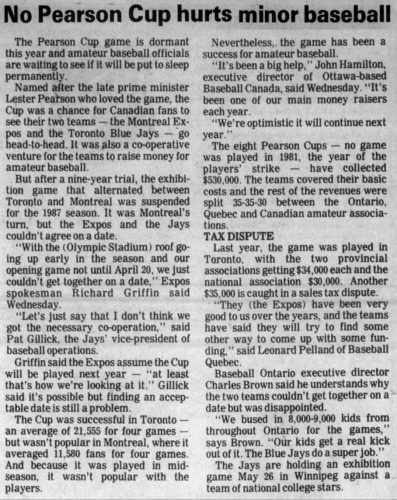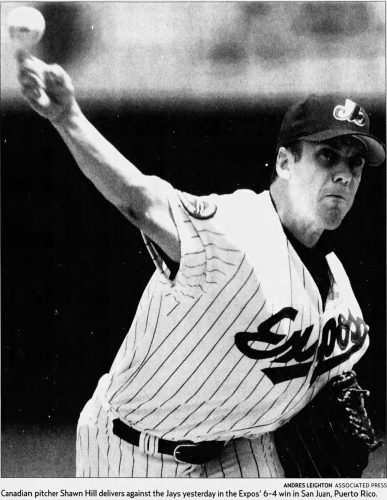After the 2004 season, the struggling Expos were relocated to Washington, DC, becoming the Washington Nationals. After 27 years, Canada was again down to one team north of the border. This put a definite end to the Pearson Cup, although it’s likely many didn’t even notice the demise. In the time that the cup was resurrected in 2003-04, it was never actually awarded, and having the final series played outside of Canada was a certain misstep. With 20 seasons now passed since the last time the Pearson Cup was played, we’re looking back to examine why the contest didn’t last.
In the first eight seasons that the cup was played, the intention behind the game was as a fundraiser for amateur baseball and to play on the national pride in the two Canadian MLB teams, however, reception to the games was mixed. Players were not keen on the contest because it took place on a day off, one of very few that an MLB team would have within the 162-game season. In an interview with the Toronto Star in 1982, Expos infielder Chris Speier was quoted as saying, “It’s a joke… We’ve got more important things to do than play an exhibition game on a day off during a pennant race.” Regarding the same game, Blue Jays fielder Barry Bonnell stated, “It’s fun because you’re loose and you don’t worry about taking an 0-fer. You just go up there and hack.” Some players gave their all, playing no differently than they would in any other game, while still others did the bare minimum so as to avoid getting hurt in a game that meant nothing to the standings.
Managers were also reluctant to play their top players in case they got injured. Several games saw minor leaguers being tested out with a few top tier players mixed in, but rapidly substituted out. In 1982, Expos manager Jim Fanning stated, “I had a responsibility to use my best players…then I replaced them subtly.” One of the worst examples of this was in the 1984 game, which saw Bullpen Coach Joe Kerrigan take the mound for the Expos in extra innings. The impression left with fans and reporters was that the games were not taken particularly seriously by the teams.
As far as the sense of national pride went, the vast majority of the players who entered the games were not Canadian, and did not feel the Canadian pride that filled the stands. This was a particular problem during the final Pearson Cup contest which, as stated, was not even held on Canadian soil. The only Canadian who played in the San Juan series was Shawn Hill, who took the win for the Expos at the July 4th game.
Another issue facing the Pearson Cup games was the unbalanced fan reception. When the game was played in Toronto, the average attendance was 21,500. By contrast when the game was played at Olympic Stadium, average attendance hovered around 11,000 (one-sixth of the stadium’s capacity). Some blamed a lack of promotion in Montréal. After a particularly dismal crowd of only 8,291 in 1983, Cas Pielak, president of Baseball Canada was quoted in The Gazette saying, “I’m not satisfied… we’re probably not getting the message across about what the money goes for.”
In 1987, when a date could not be agreed upon to schedule a Pearson Cup game, Pat Gillick (Blue Jays VP of Baseball Operations, and CBHFM Class of 1997) told reporters, “Let’s just say that I don’t think we got the necessary cooperation.” Amateur baseball federations were still hopeful that the contest would resume the following season, but it was not to be. With limited interest from fans, players, and management, the cup would lie dormant through 16 seasons. The ones that really missed out when the cup was cancelled were the amateur baseball federations supported by the earnings from the games.














